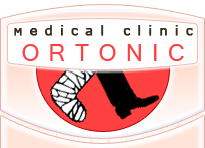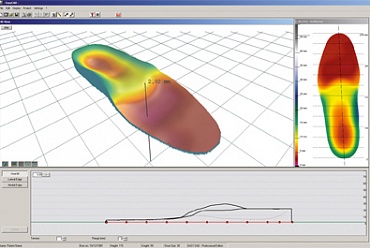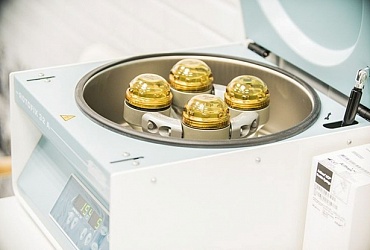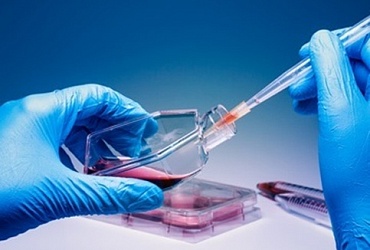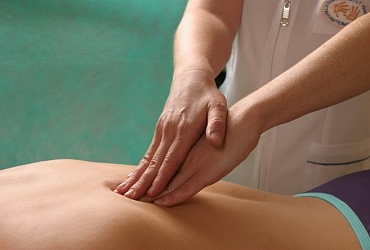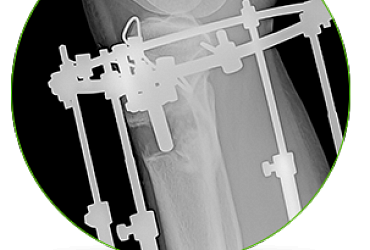Plaster of new generation


The plaster of new generation
Today, with all the increasing mobility of the able-bodied population, bone fractures of various etiologies remain one of the frequent topologies. Treatment of a fracture is primarily a comparison of bone fragments and the second stage is immobilization ie. creation of optimal conditions for anatomical bone fusion.
Immobilization (limb limb, joints) to this day is the only method of treatment of various injuries of the musculoskeletal system. For centuries, plaster has been successfully used for this purpose, which has a number of advantages necessary for the treatment of patients:
· plaster is inexpensive material,
· not hardened plaster is very plastic, which allows you to give the desired form of bandage,
· plaster immobilization is very simple to manufacture.
But along with its positive qualities, plaster immobilization has a number of significant drawbacks.
· first of all, in order to have sufficient strength, it requires the imposition of many layers. Because of this, the bandage becomes thick and heavy;
· high hygroscopic property of the plaster or its ability to absorb easily and to retain moisture for a long time leads to the fact that the bandage loses its hardness and stiffness and thereby loses its healing effect, which requires its urgent replacement;
· the need for a prolonged 4 to 8 weeks wearing this bandage leads to a problem of personal hygiene. It is possible to shower only in parts, carefully protecting the plaster from contact with water. The lack of an elementary ventilation of the skin under the plaster cast leads not only to the appearance of an unpleasant odor, but also to the risk of itching and various inflammatory manifestations of the skin;
· plaster material, which after drying crumbles and stains clothing and bedding.
Recently appeared on the western medical market, synthetic materials, Scotchkast Plus and Softkast, won the deserved recognition not only of doctors, but also of patients.
Scotchcast consists of woven fibers of fiberglass fibers impregnated with a special polyurethane resin containing water-soluble lubricants. A polymeric immobilizing bandage or artificial plaster completely replaced the plaster bandage in the treatment of fractures.
· quick and easy bandage application Scotchkast minimizes the patient's discomfort and saves the doctor's time;
· can withstand body weight load as early as 30 minutes after application;
· has excellent plastic properties, which provides an excellent fit, modelability and smoothness of the bandage; Bandage of polymer bandage;
· combination of extraordinary strength of Scotchkast Plus and ease of material (4-5 times lighter than plaster) increases the mobility of the victim ie. promotes comfortable and long-term use;
· the material is non-toxic and does not cause allergic reactions;
· air permeability of this material promotes air circulation ("skin breathing"), which prevents itching, maceration and other skin manifestations;
· Scotchcast Plus artificial plaster bandage is not afraid of moisture, so the patient can take a shower (bath);
· from the material of Optima Kast it is possible to form circular and langetic bandages, as well as orthoses;
· the bandage from Optima Kast passes X-rays well, allowing you to get more contrasting images.
But it is necessary to remember that the result of any rigid and prolonged immobilization are:
· violation of blood circulation and as a consequence of muscle atrophy,
· shortening of the joint capsule, leading to joint stiffness;
· demineralization of bone tissue or the development of osteoporosis,
· loosening of ligaments and tendons.
To minimize the above-mentioned consequences, functional immobilization was developed, which allows controlling movement and functional load, which in turn prevents muscle atrophy. Thus, functional immobilization accelerates the process of recovery and promotes a more rapid return to a normal lifestyle.
To this end, a new synthetic Softcast material was created, which externally differs in no way from Scotchcast's rigid material and is a fiberglass fabric packed in sealed foil bags. Softcast material is also cured by the action of air moisture or by wetting.
Along with all the properties of Scotchast / Scotchast / Softcast has such unique properties as:
· after curing, it does not become rigid, but remains semi-rigid;
· pliable, but it is not elastic and always assumes its original form;
· Plastic edges allow you to repeat the "protrusions of the bones."
The low weight and high strength of the polymeric bandage allow the patient to limit himself in movements less than when applying a conventional plaster. However, the load should not be too large, as this can affect the condition of a crack or fracture or lead to a disruption in the integrity of the dressing.
If plaster becomes dirty, you can clean it with a damp cloth. Rough edges can be smoothed with sandpaper or a file.
After immersion of the dressing in water, it must be carefully dried before resuming the load. First, the bandage is wiped with a towel to remove excess moisture, then it is dried with a hair dryer. The drying time is from 20 minutes to 3 hours or more, depending on the type of dressing. In the absence of a hairdryer, the bandage can be dried in the air, in which case the drying time will depend on the condition of the dressing. Avoid prolonged or frequent moistening of the dressing without carefully drying it, as this can lead to maceration of the skin.
